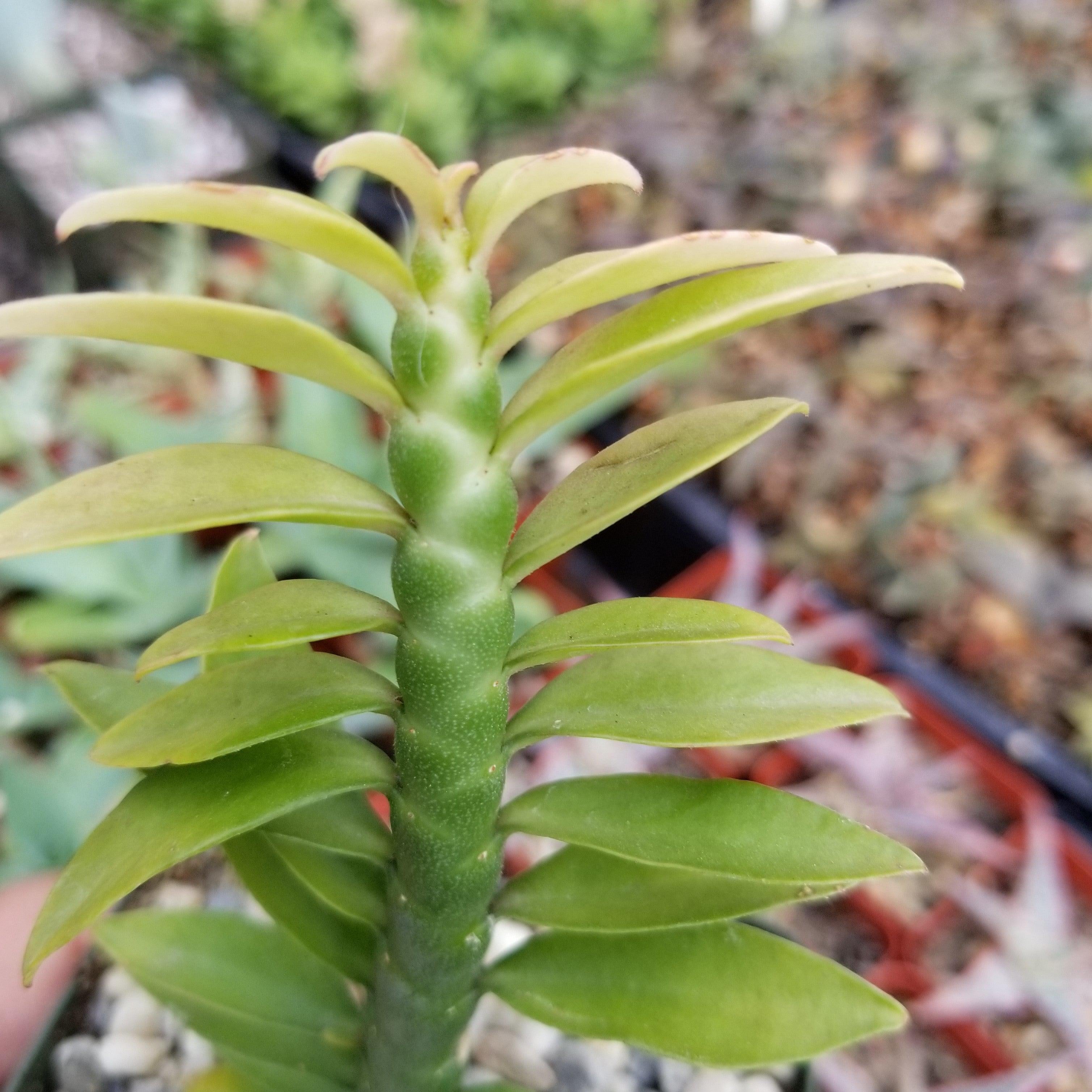

#Pedilanthus tithymaloides care mods#
"The Botanical Register: Consisting of Coloured Figures of Exotic Plants, Cultivated in British Gardens, with History and Mods of Braetment" Ridgway, 1846Ĥ) George E. 226-227Ģ) Forest & Kim Starr “Pedilanthus tithymaloides (Slipper flower)”. Remarks: Subspecies are usually identifiable by their leaves, which come in several types such as laurel-like and variegated and which can be tinged with white or red.īibliography: Major references and further lecturesġ) Urs Eggli "Illustrated Handbook of Succulent Plants: With 487 Colour Photos, Printed in 64 Colour Plates. 3-4,5 mm long, 2,5-3,2 mm wide.īlooming season: Although flowering in flushes year round in warm tropical regions, it blooms most heavily in summer. Style up to 12 mm long with a thin tube.įruit: Capsule, cuboid with truncated ends, deeply 3- lobed. Cyathia, bilaterally symmetrical, scentless, tube red green below, 7-15 mm long. Each cyathia (flower structures containing separate male and female parts) is supported by a peduncle 3-8 mm long, red, green below and enclosed in bright red involucral, bracts, ovate and irregularly acuminate in shape (e.g., like a slipper) 4-12 mm long, 2-5 mm wide. Inflorescence: The inflorescence is a apical or axillary dichotomous congested cyme near the stem's tip. The plants are extremely variable in size and growth patterns. The leaves will drop off also if the soil becomes too wet. An extended drought or winter cold spell may cause the leaves to completely drop off. The veins in the leaves are pinnate with a thick keeled midrib beneath. Leaves: Evergreen or caduceus, arranged alternately just near the branch tips, sessile (attaching directly to the plant) or sub-sessile 2 to 12 mm long, glabrous (smooth), simple, ovate to lanceolate 1-16 cm long, 1-10 cm wide, acuminate in shape, base cuneate, margins entire. Stem: Branches, upright, woody to succulent, rubbery, slightly zig-zagging, wax-coated, narrow, green stripped in white and often leafless before flowering. The little flowers at the tips of new growth resemble a bird. When flowering or chilly winter temperatures occur, the leaves may blush pink. The zigzag stems are also stripped whit white. variegata) is a popular selection with medium-green, slightly glossy leaves that are perfect ovals and edged edged in white. Variegated form: The variegated form ( Euphorbia tithymaloides f. It is also widely known by the old scientific name Pedilanthus tithymaloides. smallii (Millsp.) Dresslerĭescription: Euphorbia tithymaloides is an erect perennial succulent spurge growing to around 0,4 to 3 metres tall and 40-60 cm wide that branches profusely from the base It produces abundant flowers (cyathia) with somewhat shoe-shaped reddish-colored involucrum bracts that give this species the common name Slipper Plant. retusus (Benth.) DresslerĮuphorbia tithymaloides subs.

padifolius (L.) Griseb.Įuphorbia tithymaloides subs. & Britton) CroizatĮuphorbia tithymaloides subs.

Tithymalus bahamensis (Millsp.) CroizatĮuphorbia tithymaloides subs.bahamensis (Millsp.) V.W.Steinm.Īcta Bot. Tithymaloides angustifolia (Poit.) KuntzeĮuphorbia tithymaloides subs.Tithymalus petraeus (Brandegee) CroizatĮuphorbia tithymaloides subs.Tithymaloides houlletii (Baill.) Kuntze.Pedilanthus canaliculatus (Lodd.) Sweet.The flower in the photo below appears to be a group of birds drinking from a center fountain. The sap is moderately caustic, although mild by Euphorbia standards, it should still be handled with caution. It does best in a small pot you can change pots to just one size larger when roots become extremely crowded. Liquid fertilizer should be used once a month. Water even more sparingly if the room temperature is below 60 degrees the temperature should never go below 55 degrees. Water sparingly, just enough to make the potting mixture moist. Take care not to over-water, which can cause rotting.
#Pedilanthus tithymaloides care full#
It needs some protection from hot summer sun, but it will be happiest in full sun during the fall and winter. Pedilanthus is very easy to grow as a houseplant. Here's a few more information from toptropicals:ĭevil's backbone, Zigzag plant, Jacob's ladder The plant can be divided as it gets older and produces a clump of vertical stems.


 0 kommentar(er)
0 kommentar(er)
